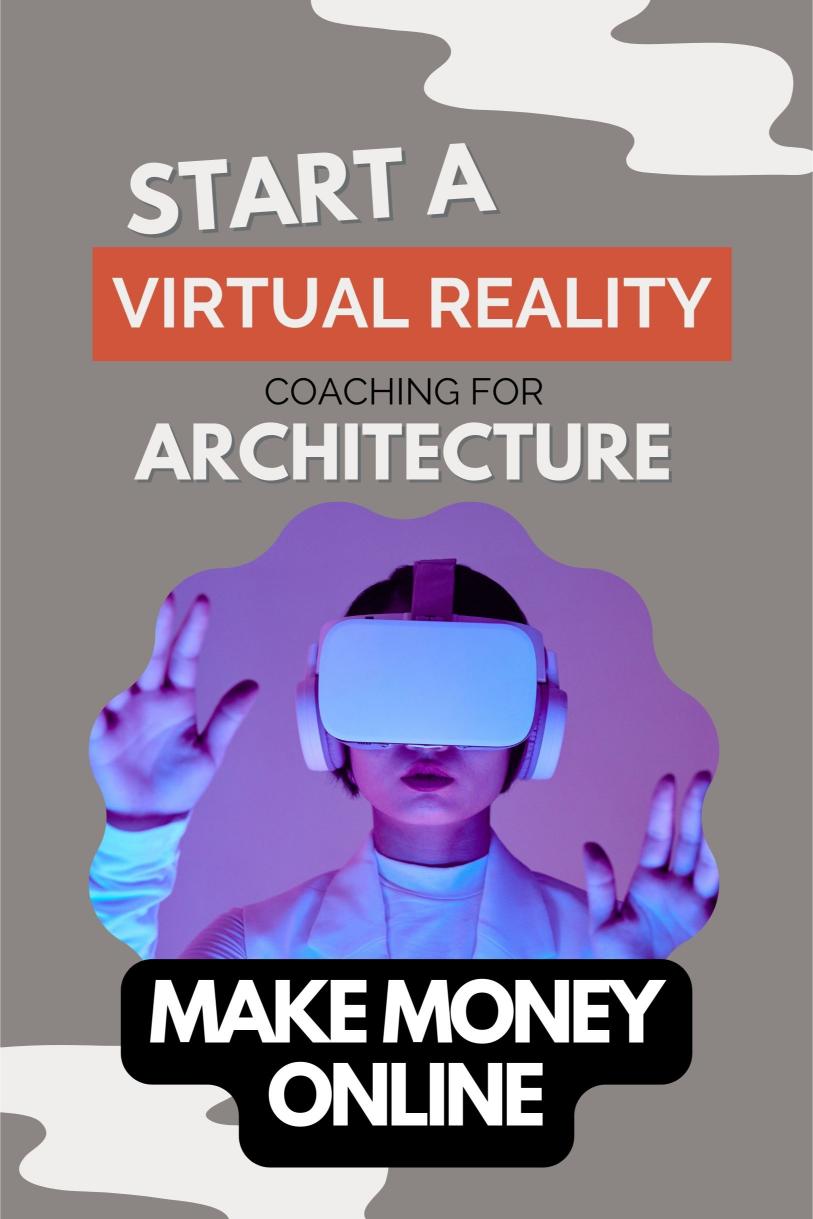Last Updated on October 8, 2024 by Arif Chowdhury
Ever wondered how to turn your architecture skills into a sweet side gig?
Stuck in a 9-to-5 grind, dreaming of working from your couch?
What if I told you there’s a way to combine your passion for design with cutting-edge tech, all while padding your bank account?
Welcome to the world of virtual reality coaching for architecture students.
The VR Revolution in Architecture Education
Virtual reality isn’t just for gamers anymore.
It’s revolutionizing how we teach and learn architecture.
In fact, a recent study found that 79% of architecture firms now use VR in their design process.
This tech is changing the game, and students are hungry to get ahead.
That’s where you come in.
Why VR Coaching is the Next Big Thing
Think about it:
- Students need hands-on experience with VR tools
- Schools can’t always provide one-on-one attention
- You’ve got the skills and knowledge they crave
It’s a perfect storm of opportunity.
And the best part? You can do it all from home, in your pajamas if you want.
Getting Started: What You Need
Let’s break it down:
- VR Hardware: A decent setup (Oculus Quest 2 is a solid choice)
- Architecture Software: SketchUp, Revit, or whatever you’re comfortable with
- Teaching Platform: Zoom, Google Meet, or a specialized VR collaboration tool
- Marketing Skills: To get the word out (more on this later)
That’s it. No fancy office, no commute, no boss breathing down your neck.
Finding Your Niche
Here’s the secret sauce:
Don’t try to be everything to everyone.
Pick a specialty:
- Sustainable design in VR
- Historic preservation techniques
- Futuristic concept development
Find what lights your fire and run with it.
Students will flock to someone who’s passionate and knowledgeable about a specific area.
Pricing Your Services
Here’s where it gets juicy.
The average hourly rate for VR coaching in architecture ranges from $50 to $150 per hour.
That’s not chump change.
Start on the lower end as you build your reputation, then scale up as demand grows.
Remember:
- Value-based pricing > Hourly rates
- Packages > One-off sessions
- Results > Time spent
Marketing Your VR Coaching Business
Time to get the word out.
But forget old-school flyers and cold calls.
Here’s what works:
- LinkedIn: Connect with architecture students and professionals
- Instagram: Showcase your VR designs and teaching snippets
- YouTube: Tutorial videos to demonstrate your expertise
- Partnerships: Team up with architecture schools or online learning platforms
Pro tip: Create a freebie. A short VR architecture course or checklist. Give it away to build your email list.
Delivering Killer VR Coaching Sessions
Now, the rubber meets the road.
Here’s how to knock it out of the park:
- Start with a needs assessment: What does the student want to achieve?
- Break complex concepts into bite-sized chunks
- Use real-world examples and case studies
- Encourage hands-on practice during the session
- Provide actionable feedback and homework
Remember, you’re not just teaching software. You’re shaping the future of architecture.
Scaling Your VR Coaching Empire
Once you’ve got a steady stream of students, it’s time to level up.
Here’s how:
- Group coaching: More students, more money, less time
- Create a course: Passive income while you sleep
- Write an ebook: Establish yourself as the go-to expert
- Speak at conferences: Both in-person and virtual events
The sky’s the limit.
Real Talk: Challenges and How to Overcome Them
Let’s not sugarcoat it. There will be hurdles:
- Tech issues: Always have a backup plan
- Time management: Set boundaries and stick to them
- Imposter syndrome: Remember, you know more than you think
- Competition: Focus on your unique value proposition
The key? Stay flexible, keep learning, and never lose sight of why you started.
The Future of VR Coaching in Architecture
Buckle up, because this ride’s just getting started.
A recent report predicts the global VR market in education will reach $13.08 billion by 2026.
That’s a lot of zeros.
And architecture is at the forefront of this revolution.
As AI and machine learning integrate with VR, the possibilities are mind-blowing.
Imagine teaching students how to design earthquake-resistant buildings in a hyper-realistic VR simulation.
Or collaborating on a virtual construction site with team members from around the globe.
The future is here, and you can be part of shaping it.
Your Next Steps
Ready to dive in?
Here’s your action plan:
- Assess your skills and choose your niche
- Invest in the necessary hardware and software
- Create a simple website or landing page
- Start networking and building your online presence
- Offer a few free sessions to get testimonials
- Launch your paid services and iterate based on feedback
Remember, every expert was once a beginner.
The key is to start now and learn as you go.
Wrapping It Up
Virtual reality coaching for architecture students isn’t just a trend.
It’s a game-changing opportunity to share your passion, make a real impact, and yes, generate some serious income from the comfort of your home.
The demand is there. The tools are accessible. The potential is enormous.
All that’s missing is you.
So, what are you waiting for?
The future of architecture education is virtual, and it’s calling your name.
Time to answer.
